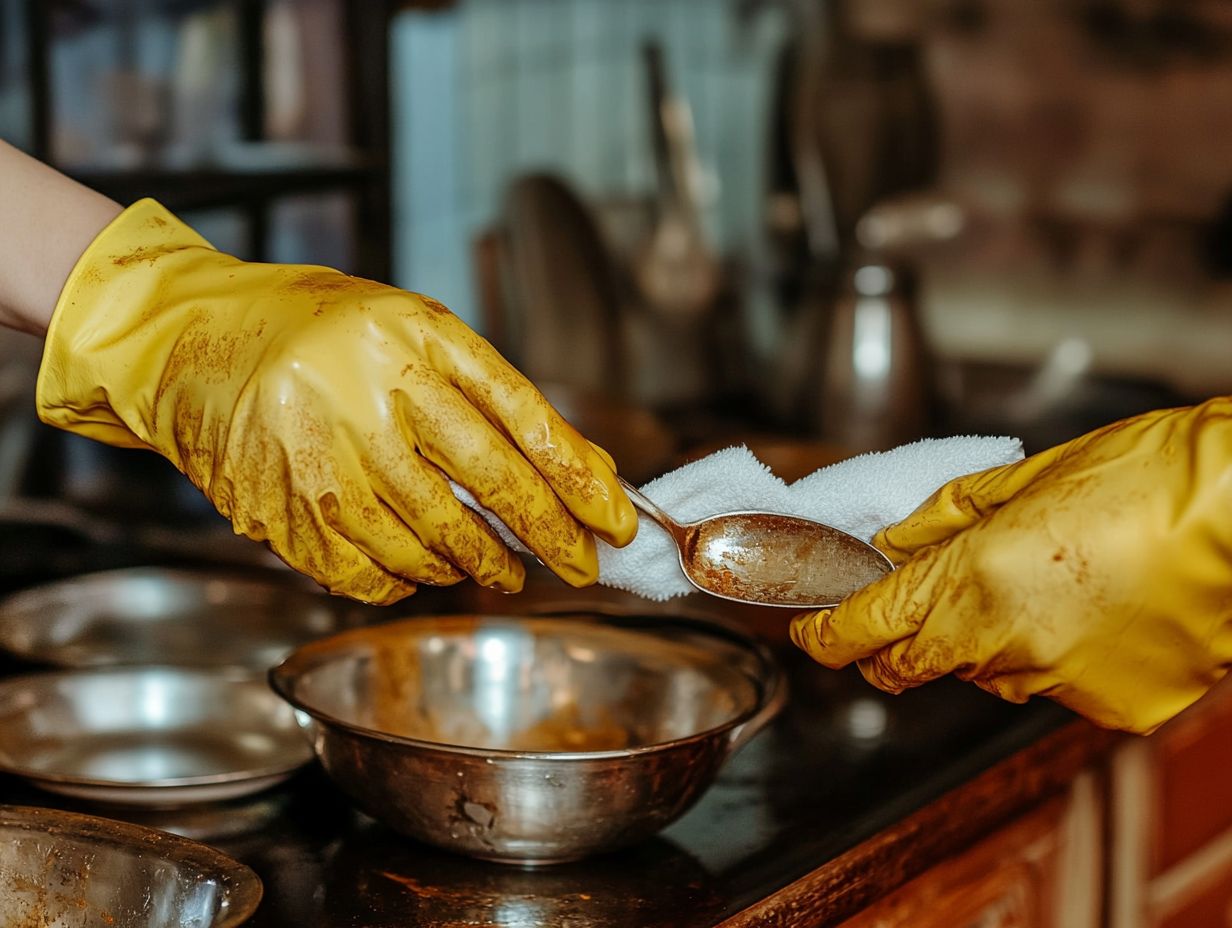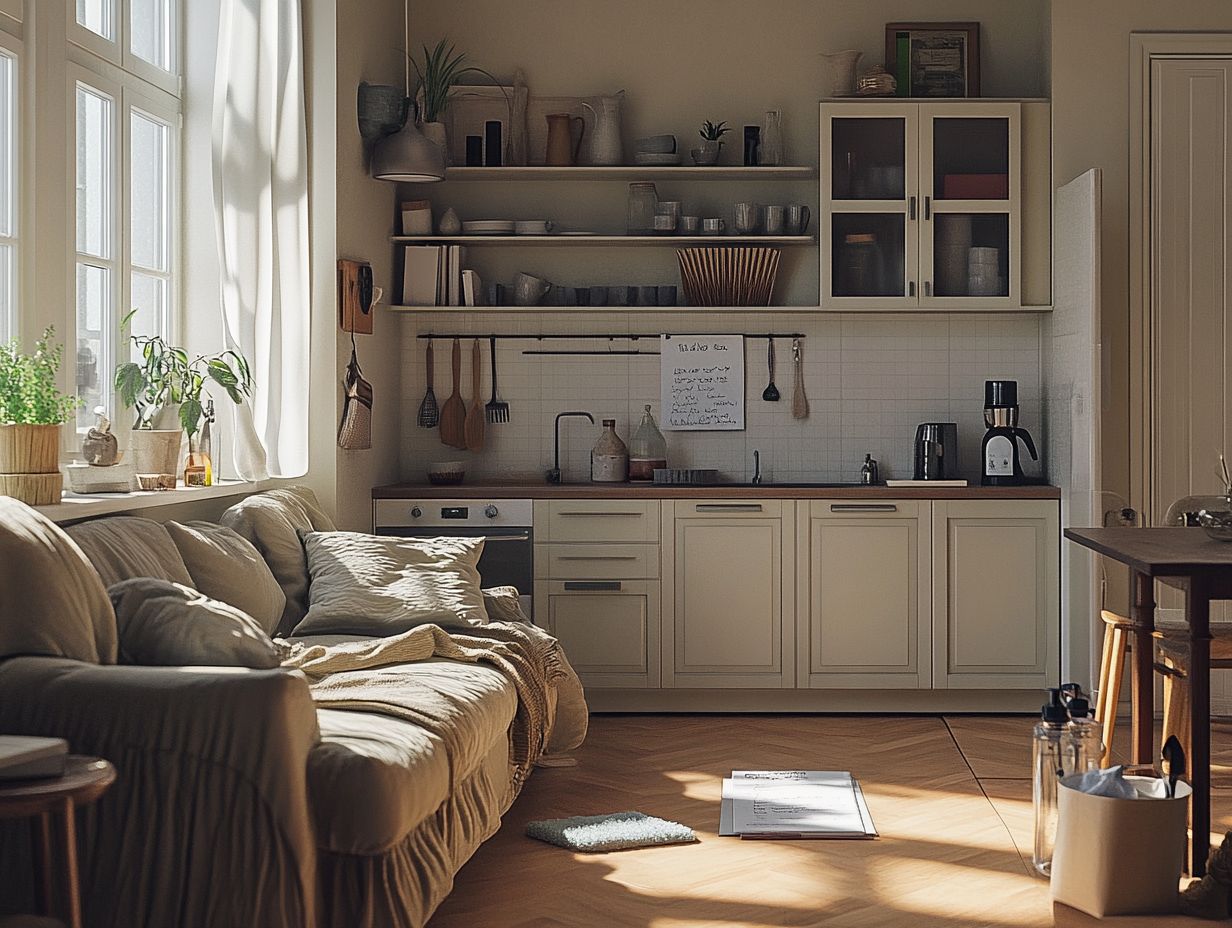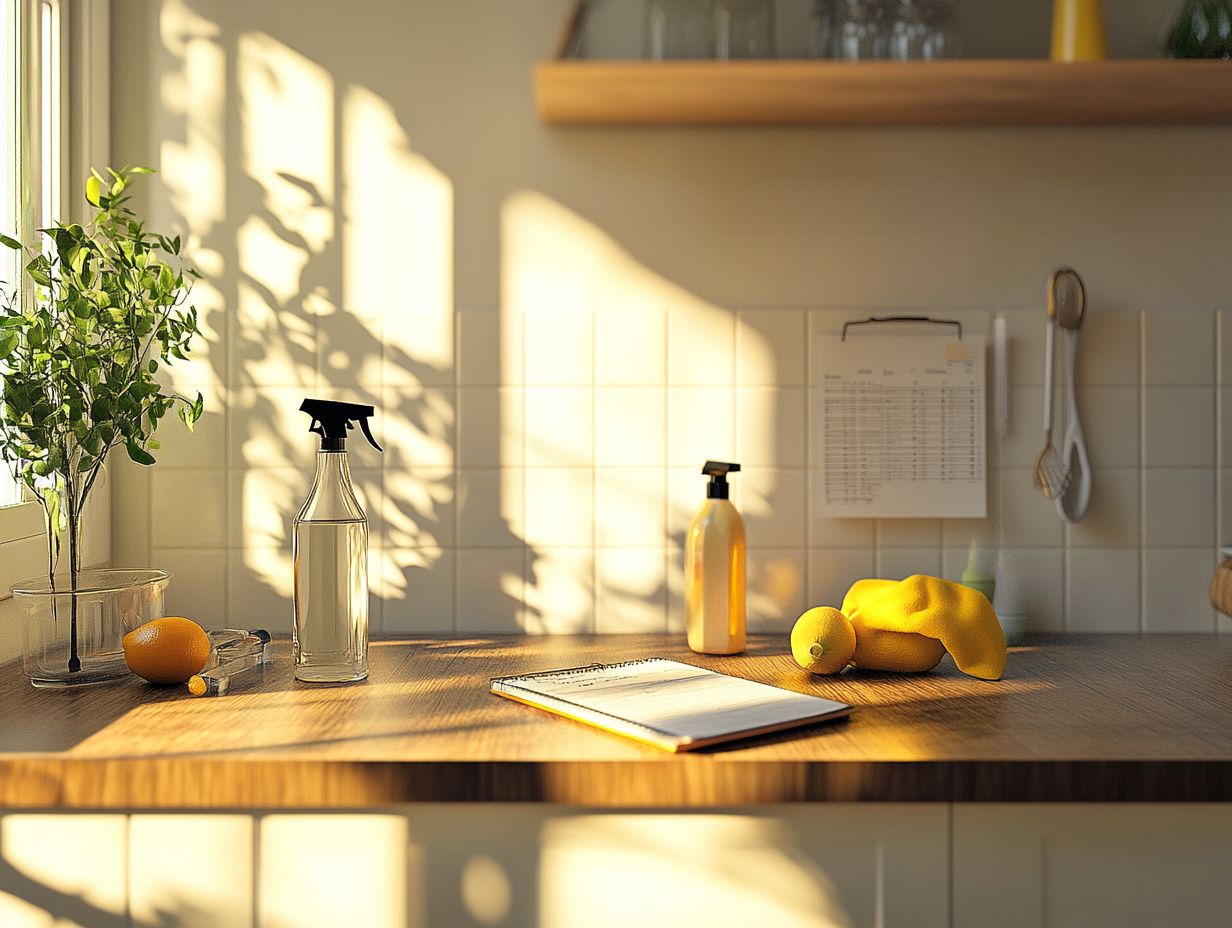Are you tired of harsh chemicals lurking among your cleaning supplies? Switching to non-toxic cleaners promotes a healthier home for you and your family and benefits the environment.
This article explores common household ingredients you can easily use to create effective floor cleaners. From DIY recipes to tips on proper application and storage, it covers everything you need to know about using natural ingredients for a cleaner, safer home. Plus, discover other creative uses for these versatile solutions! Get ready to transform your cleaning routine.
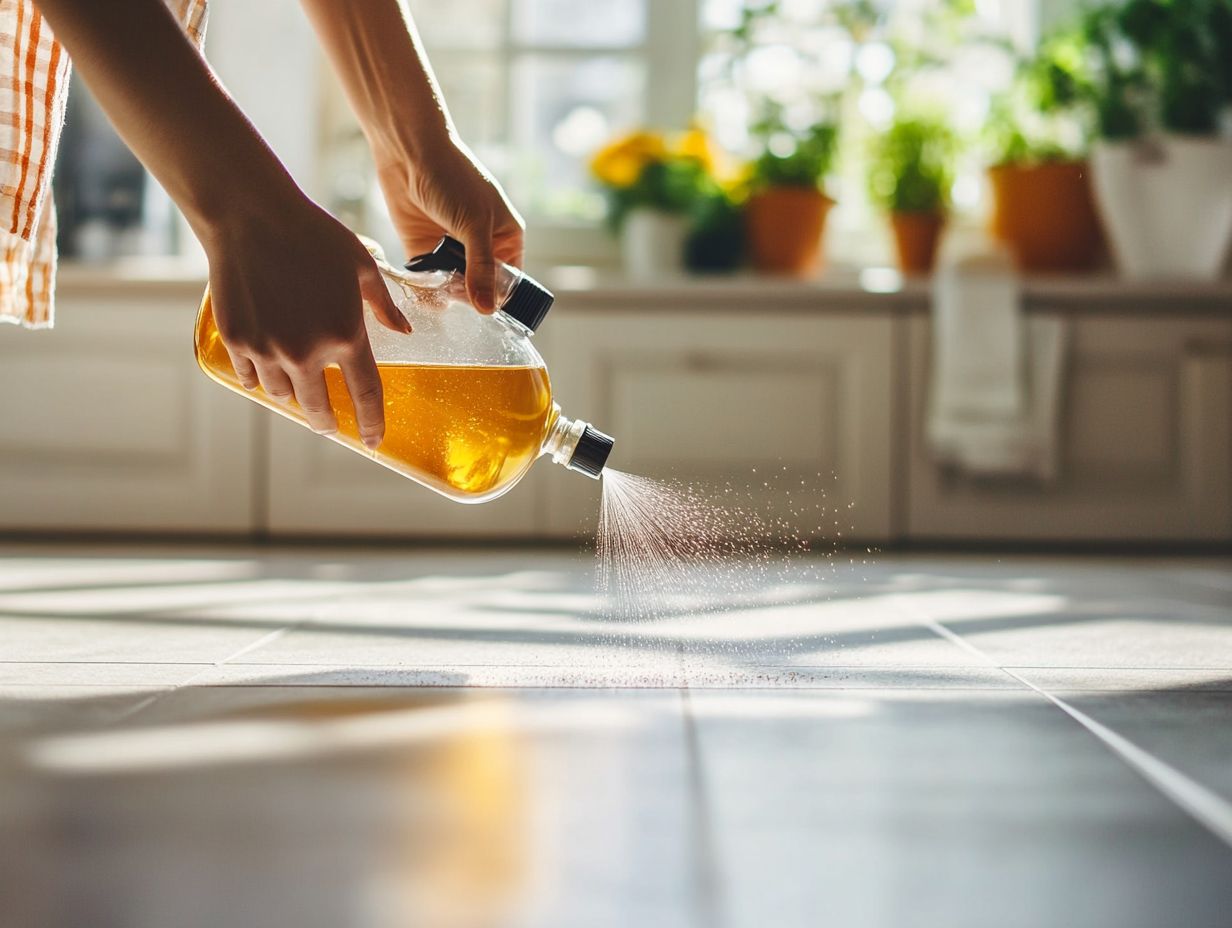
Why Switch to Non-Toxic Cleaners?
Switching to non-toxic cleaners is a total game changer for your home and the environment. Not only do these cleaners discard harmful chemicals, but they also significantly improve your indoor air quality—especially important if you have children or pets running about.
By choosing these eco-friendly options, you’re protecting your loved ones and doing your bit to help preserve our planet. For example, a simple mix of water and vinegar can work wonders as a window cleaner, rivalling any shop-bought product without those toxic fumes.
When it comes to tackling grime, bicarbonate of soda is your friend—it’s a gentle abrasive that gets the job done without exposing you to harsh chemicals.
Making the switch to non-toxic alternatives improves the health of your living space and reduces your ecological footprint, demonstrating responsibility for future generations. So, when you make informed choices about household cleaning, you’re paving the way for a safer, cleaner, and more sustainable home.
Common Household Ingredients for Making Floor Cleaners
You can make a budget-friendly and effective floor cleaner using common household ingredients you probably already have lying around. Vinegar and bicarbonate of soda are powerful natural disinfectants, and adding a splash of essential oils like lavender or lemon juice will make your cleaner smell amazing and boost its antimicrobial properties.
Mix these with hydrogen peroxide or castile soap, and you’ve got a surface cleaner that tackles grime, dirt, and stains while being safe for children and the environment. Let’s dive into these natural ingredients and see how to use them in your homemade cleaning solutions.
Benefits of Natural Ingredients
Natural ingredients have many advantages over traditional cleaning agents, helping you create a healthier home and environment. They deliver an effective cleaning punch without all the harmful chemicals found in conventional products.
Take lemon juice, for example. It’s not just a natural bleach; it also leaves behind a refreshing scent that is perfect for your kitchen and bathroom. And don’t underestimate olive oil—it works wonders for polishing wooden surfaces, giving them a shine without toxic residues.
From personal experience, switching to these eco-friendly options cleared my worktops of tough stains and even eased my family’s allergies. We noticed a significant drop in irritants floating around in the air.
This holistic approach to cleaning not only keeps your home spotless but also supports a more sustainable ecosystem so you can maintain your living spaces without compromising the health of our planet.
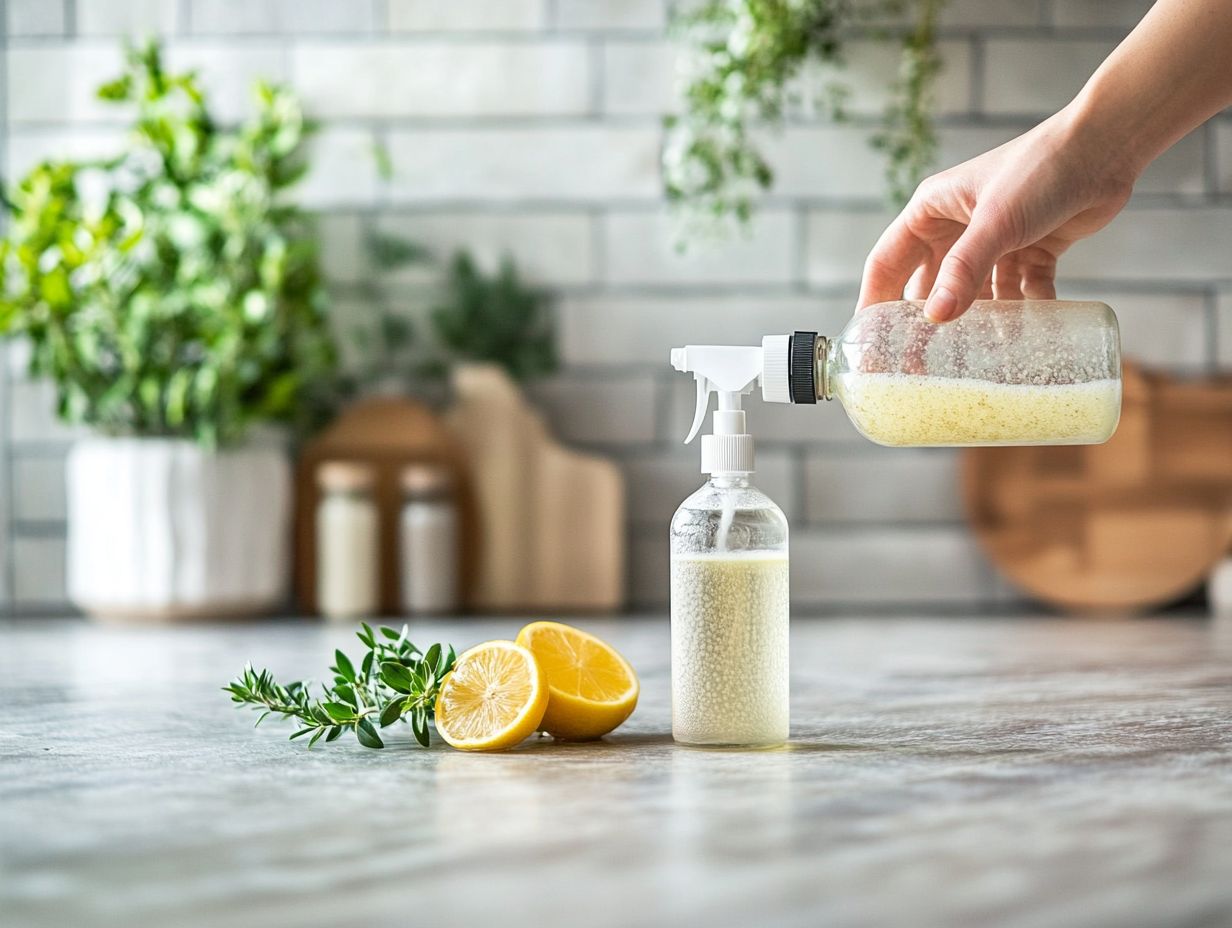
DIY Floor Cleaner Recipes
Making your DIY floor cleaner can be a fun and easy project that packs a punch. With just a few simple recipes using natural ingredients, you can whip up cleaning solutions that tackle dirt and grime while leaving your floors shining—without any harmful residues.
A basic recipe might be a mix of vinegar, water, and a few drops of essential oils to add a fresh scent. Or, if you’re facing tougher stains, a combination of bicarbonate of soda and castile soap can work wonders.
Let’s dive into some simple and effective formulations to keep your floors spotless and safe for your family.
Simple and Effective Formulas
When it comes to DIY floor cleaners, simplicity and effectiveness can really make a difference. For example, you can whip up a basic cleaning solution by mixing equal parts vinegar and water. This combination works brilliantly as a surface cleaner for laminate and tiles.
Want to take it up a notch? Add a few drops of essential oils, like peppermint or tea tree oil, to give it some antimicrobial power and a fresh scent. Knowing the right dilution ratios and application techniques is key to achieving the best results while keeping things safe.
Beyond vinegar and water, another excellent option is a baking soda paste. Mix baking soda with a little water until it becomes nice and thick. This paste is fantastic for scrubbing stubborn stains on carpets and grout lines. To make it, combine three parts baking soda with one part water, then apply it directly to the stain and let it sit for about 10 minutes before giving it a gentle scrub.
Safety is extremely important. Always do a test run on a hidden spot first to ensure the surface can handle it without any damage. And don’t forget to keep the area well-ventilated while you’re cleaning to avoid irritation from strong scents or fumes.
Tips for Using Non-Toxic Floor Cleaners
Using non-toxic floor cleaners can be a breeze if you follow the right application and storage tips. Always remember to shake or mix your cleaning solutions thoroughly before using them; this enhances their effectiveness against grime and stains.
Store your homemade cleaners in easy-to-use spray bottles and label them clearly to avoid mix-ups. Safety precautions are also essential, especially when you’re using essential oils or other concentrated solutions, as they can be quite potent.
Let’s dive into some practical tips for using your non-toxic cleaning supplies effectively and safely.
Proper Application and Storage
Using and storing your non-toxic cleaners optimally boosts their effectiveness and makes them last longer.
Understanding what different surfaces need can make a huge difference in achieving the spotless results you’re after. For example, when you’re dealing with delicate surfaces like glass or chrome, using a microfiber cloth can save you from scratches and give you that streak-free shine. However, for tougher surfaces like worktops, you might want to reach for stronger scrubbing pads.
To keep your non-toxic cleaners fresh for as long as possible, consider using airtight containers and labelling them with dates. This way, you’ll always know what’s what. And don’t forget to keep these products out of reach of children and pets to ensure safety while you enjoy your natural cleaning solutions.
Other Uses for Non-Toxic Cleaners
Non-toxic cleaners aren’t just for your floors; their versatility allows you to tackle all kinds of cleaning tasks around your home. These eco-friendly solutions can combat odours and germs without leaving harmful residues, whether deodorising the kitchen or disinfecting bathroom surfaces.
For instance, a mixture of vinegar and bicarbonate of soda works wonders as a stain remover on various surfaces, while essential oils can fill your space with a fresh scent. Let’s dive into the multi-purpose uses of these natural cleaning solutions that are safe for children and the environment.
Multi-Purpose Cleaning Solutions
Multi-purpose cleaning solutions are a great way to streamline your cleaning routine while keeping it eco-friendly. A simple mix of vinegar, water, and a few drops of essential oils can tackle everything from your kitchen worktops to your bathroom tiles, showcasing the excellent natural properties of these ingredients.
These effective formulas aid with surface care and maintenance and reduce the need for multiple cleaning supplies, which aligns perfectly with sustainable living practices. Let’s discuss some versatile solutions that simplify your household cleaning tasks.
For example, using a multi-purpose cleaner on your granite worktops will eliminate bacteria and keep that surface shining without any harsh chemicals. And if you add some bicarbonate of soda, you’ve got a fantastic blend for scrubbing tough stains in your sink or bath, making your cleaning process much more efficient.
When preparing these cleaners, grab some spray bottles for easy application and label each solution clearly. By noting which surfaces each mixture is suitable for, you’ll ensure that every corner of your home stays spotless and well-maintained with minimal effort.
